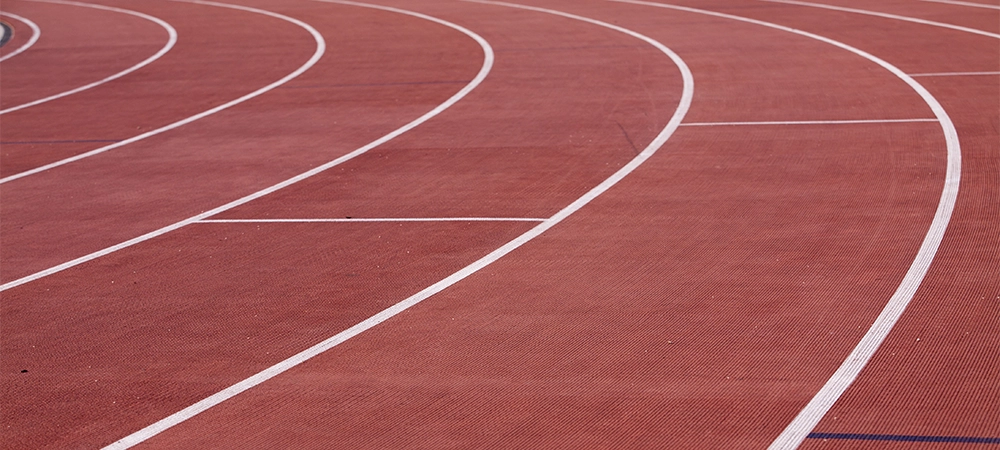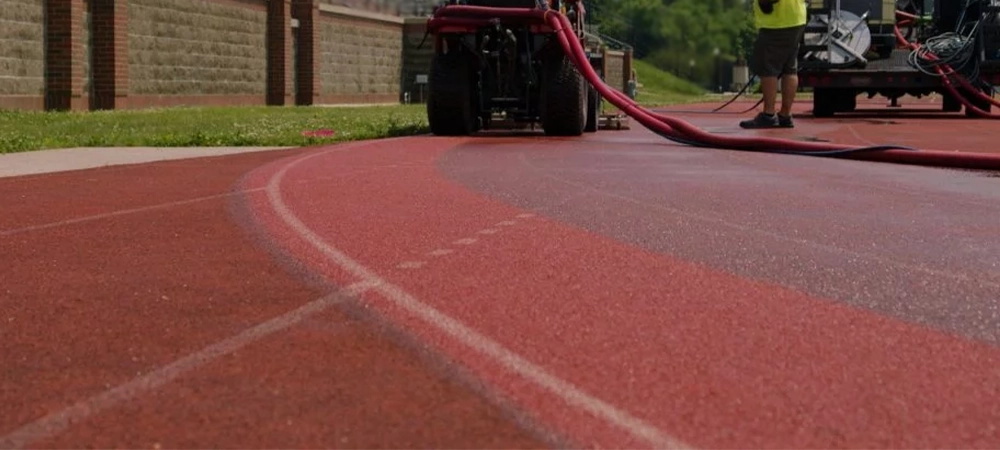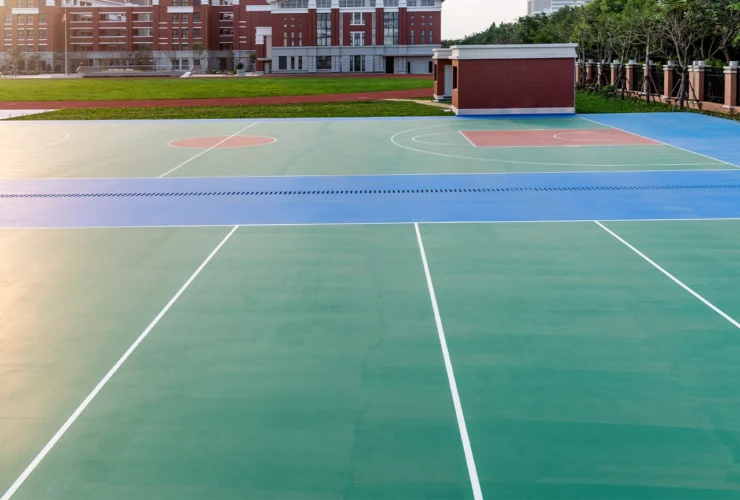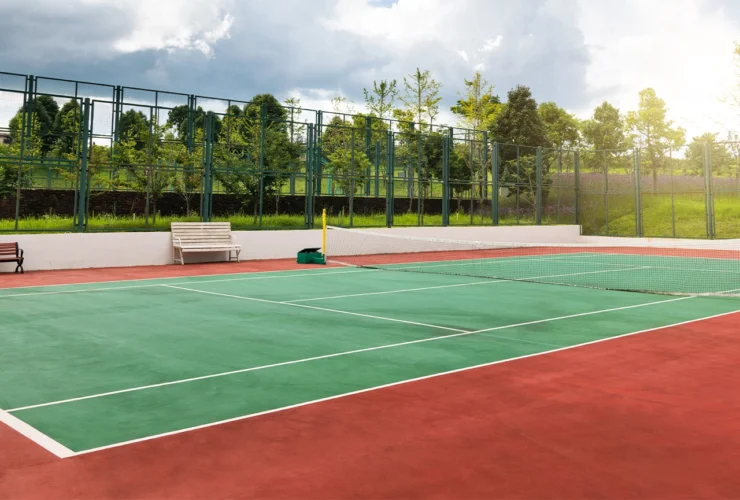Maintenance Tips for Your Indoor Running Track: Keep It in Top Shape
An indoor running track is a valuable asset for any facility. It provides a controlled environment for athletes and fitness enthusiasts to train and compete. Whether within a school, community centre, or private gym, the condition of the track directly impacts both performance and safety.
A well-maintained track offers a consistent surface for optimal speed and traction, reducing the risk of slips, trips, and injuries. Proper care also helps to preserve the track’s quality, ensuring its longevity and minimizing the need for costly repairs or premature resurfacing.
This article provides practical maintenance tips to help you keep your indoor running track in top shape. From daily cleaning routines to preventative measures, we’ll cover essential steps to maximize the lifespan of your track and provide a safe, high-performing surface for all users.
Related Article: Step-by-Step Guide to Running Track Installation: What You Need to Know
Daily Care
Keeping your indoor track in top condition requires consistent daily attention. Here’s what you should do:
Cleaning
Dirt, dust, and debris are the enemies of a good running track. They can degrade the track surface over time, reduce traction, and even pose a safety hazard. Regular cleaning is essential to remove these contaminants and maintain the track’s quality.
Recommended Tools and Methods:
- Soft brooms: Ideal for daily sweeping to remove loose dirt and dust.
- Vacuums with brush attachments: Effective for picking up finer particles and reaching corners.
- Microfibre mops: Can be used with a mild cleaning solution for a more thorough clean (ensure proper drying afterwards).
Cleaning Solutions:
- For rubber tracks: Use a pH-neutral cleaner diluted with water. Avoid harsh chemicals or abrasives that can damage the rubber.
- For synthetic tracks: Check the manufacturer’s recommendations for specific cleaning solutions. Generally, a mild detergent diluted with water is suitable.
- For wood tracks: Use a cleaner specifically designed for wood surfaces. Avoid excessive water, as it can warp the wood.
Inspections
Besides cleaning, daily visual inspections are crucial. A quick walk around the track can help you identify potential problems early on. Pay close attention to:
- Starting lines: These areas experience high impact and may show signs of wear sooner.
- Corners: The constant turning action in these areas can cause increased stress on the track surface.
- Lane markings: Ensure markings are clearly visible for safety and proper lane usage.
- Any cracks, tears, or loose areas: These should be addressed promptly to prevent further damage.
By incorporating these daily cleaning and inspection practices, you can significantly extend the life of your indoor track and ensure a safe and optimal training environment for all users.

Weekly Maintenance
While daily cleaning is essential, your indoor track will benefit from a more thorough cleaning on a weekly basis. This helps remove any ingrained dirt or grime that may have accumulated.
Deeper Cleaning
- Damp Mopping: Use a damp mop with a mild detergent solution to clean the entire track surface. Ensure the mop is not soaking wet, as excessive moisture can be detrimental to certain track materials.
- Focus on High-Traffic Areas: Pay special attention to areas like starting lines, corners, and exchange zones, which experience greater wear and tear.
- Thorough Drying: After damp mopping, ensure the track is completely dry. Use fans or open windows to aid in the drying process. This prevents mould or mildew growth and maintains the track’s integrity.
Track Markings
Clear and visible track markings are crucial for both performance and safety. They guide runners, ensure fair competition, and help prevent collisions.
- Inspection: Regularly inspect markings for fading, chipping, or damage.
- Cleaning: Clean the areas around the markings to remove any dirt or debris that may obscure visibility.
- Touch-ups: For minor damage, use touch-up paint specifically designed for your track surface to restore the markings.
- Repainting: If markings are significantly faded or worn, consider repainting the entire track. Consult with a professional for the best approach and to ensure the correct type of paint is used.
By incorporating these weekly maintenance tasks, you can further protect your investment in your indoor running track and ensure it remains a safe and high-performing environment for all athletes.
Related Article: Why Running Tracks Matter: Importance of Quality Surfaces in Brampton
Preventative Measures
Taking preventative measures can significantly extend the life of your indoor track and reduce the need for costly repairs or premature resurfacing. Here are some key areas to focus on:
Footwear
The type of footwear used on an indoor track has a major impact on its wear and tear.
- Appropriate Footwear: Encourage the use of non-marking athletic shoes with proper cushioning and support. These shoes are designed for indoor use and help minimize the impact on the track surface.
- Unacceptable Footwear: Discourage the use of outdoor shoes, which can track in dirt and debris. Shoes with cleats or spikes should be strictly prohibited, as they can cause significant damage to the track.
- Enforce Footwear Policies: Clearly communicate footwear guidelines to all track users and consider implementing a policy to ensure compliance.
Equipment
Proper handling and storage of equipment is also vital for track preservation.
- Careful Handling: Avoid dragging or dropping heavy equipment on the track surface. Use proper lifting techniques and equipment when necessary.
- Protective Mats: Place protective mats under heavy equipment, such as hurdles or starting blocks, to distribute weight and prevent damage to the track.
- Designated Storage: Provide designated storage areas for equipment when not in use. This keeps the track clear and minimizes the risk of accidental damage.
By implementing these preventative measures, you create a safer environment for athletes and help maintain the quality of your indoor track for years to come.
Related Article: Maintenance Must-Dos: Seasonal Tennis Court Upkeep for Optimal Performance

Long-Term Care
Even with diligent daily and weekly maintenance, your indoor running track will eventually require resurfacing. This is a natural part of its lifecycle, as the surface gradually wears down over time due to constant use and impact.
Resurfacing
Professional resurfacing offers several benefits:
- Performance Enhancement: A fresh surface provides optimal traction, shock absorption, and energy return, leading to improved athletic performance.
- Safety: Resurfacing eliminates uneven areas, cracks, and other imperfections that can pose a tripping hazard.
- Longevity: A new surface effectively resets the track’s lifespan, allowing for many more years of use.
- Aesthetics: Resurfacing can revitalize the appearance of your track, making it a more attractive and inviting space for athletes.
Factors Influencing Resurfacing Frequency
Several factors contribute to how often your track will need resurfacing:
- Usage: Tracks with higher traffic and more intense use will naturally wear down faster.
- Climate: Temperature fluctuations and humidity levels can affect the track material, potentially accelerating wear and tear.
- Maintenance: Consistent and proper maintenance practices can significantly extend the time between resurfacing.
- Track Material: Different track materials have varying lifespans.
- Original Installation Quality: A well-installed track with a solid foundation will generally last longer.
Related Article: Outdoor vs. Indoor Running Tracks: Which Is Best for Your Needs?
Keep Your Track Running Smoothly
Maintaining your indoor running track doesn’t have to be a daunting task. By following these key tips, you can ensure its longevity, performance, and safety for all users:
- Daily Cleaning: Remove dirt and debris with soft brooms or vacuums.
- Regular Inspections: Check for any signs of wear or damage.
- Weekly Deep Cleaning: Use a damp mop and mild detergent for a more thorough clean.
- Maintain Track Markings: Ensure markings are visible and in good condition.
- Preventative Measures: Encourage proper footwear and equipment use.
Prioritizing regular care for your indoor track is an investment that pays off in the long run. A well-maintained track enhances athletic performance and creates a safer and more enjoyable environment for everyone. By following these guidelines, you can keep your track running smoothly for years to come.
Ready to take your track to the next level? Contact Crowall for expert advice and services, from routine maintenance to full-scale resurfacing.



